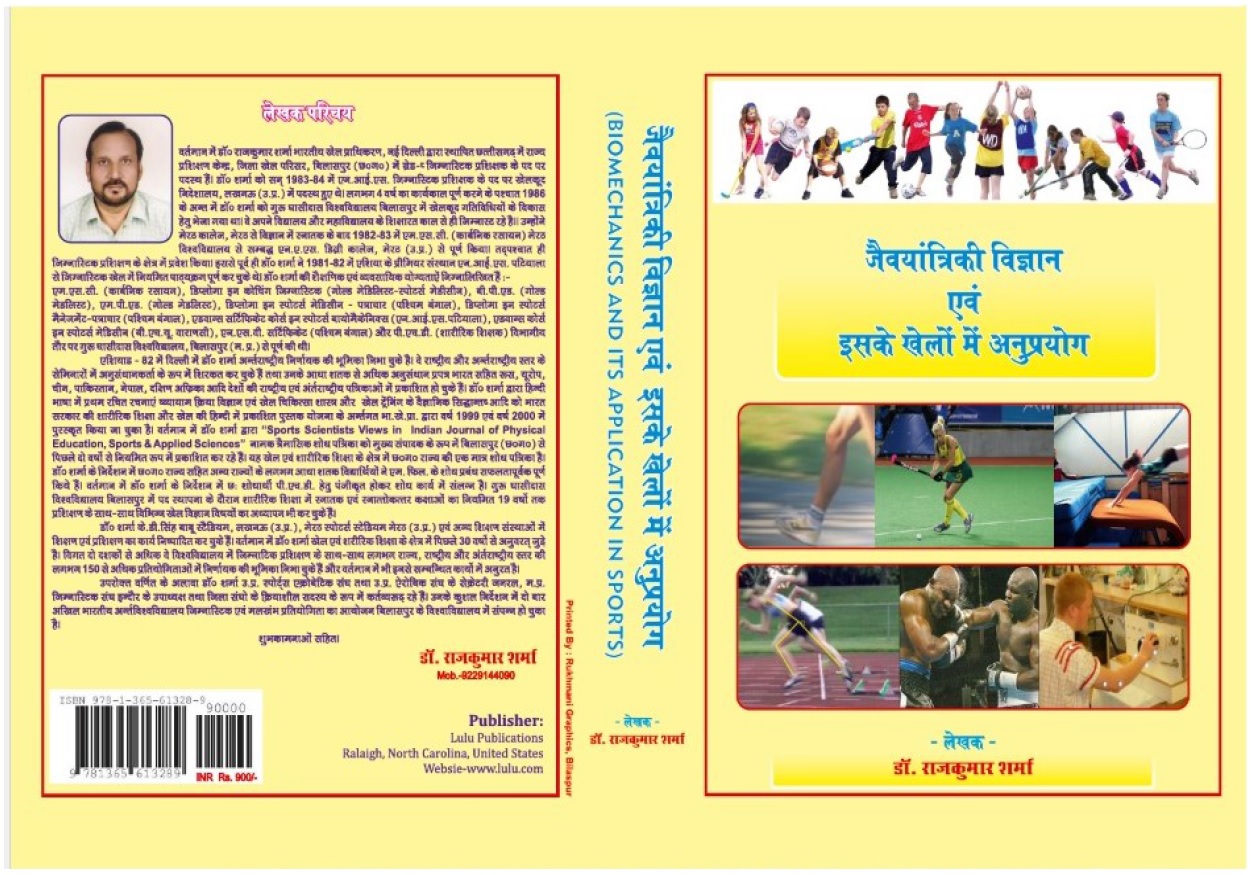| S.No. | Total View Count | Title of Manuscript | Page No | Download/ PDF |
|---|---|---|---|---|
| 1 | EFFECT OF SPATIAL AWARENESS AND VISUAL MOTOR COORDINATION ON SKILL ABILITY OF INTER-COLLEGIATE MALE KABADDI PLAYERS Author: Ghanshyam Das Garg1 & Dr. B. John2 | 08-14 |  6 6 |
Article info
doi no.: 05-2016-44975451;
AFFILIATIONS:
1. Research Scholar, Department of Physical Education, Dr. CV Raman University, Kargi Road Kota Bilaspur C.G.
2. Associate Professor, Department of Physical Education, Dr. CV Raman University, Kargi Road Kota Bilaspur C.G.
The objective of the present study is to assess the effect of spatial awareness and visual motor coordination on the skill ability of intercollegiate male kabaddi players. To conduct the study 100 intercollegiate male kabaddi players were selected. The average age of these subjects was 21.91 years and they represented their respective colleges in intercollegiate kabaddi tournaments organized in Chhattisgarh state. Purposive sampling was used for the selection of subjects. To assess spatial awareness in male intercollegiate kabaddi players of Chhattisgarh, a test standardized by Cesaroni (2007) was used. Reaction time in selected intercollegiate male kabaddi players was recorded with the help of Nelson's simple reaction time test. A mirror drawing test was used to assess the hand-eye coordination of male intercollegiate kabaddi players. The apparatus designed by Johnson and Nelson (1974) was used for the assessment of depth perception. The skill ability of the selected intercollegiate male kabaddi players was judged through the subjective ratings of three judges. Results reveal a significant impact of spatial awareness, reaction time, hand-eye coordination, and depth perception on the skill ability of male intercollegiate kabaddi players with all these variables accounting for 33.4% variance. Based on the results, it may be concluded that spatial awareness and visual motor coordination namely reaction time, hand-eye coordination, and depth perception plays a significant role in determining the skill ability of male kabaddi players. It may also be concluded that spatial awareness and visual motor coordination need special attention while preparing a training plan to enhance the skill ability of the male kabaddi players.
Keywords: Spatial awareness, visual and motor coordination, skill, kabaddi.
References
Ceciliani, A. (2005). Elementi di didattica degli giochi sportive: l’allievo e lo spazio-tempo. SdS/Rivista di cultura sportiva. 2005;XXIII(60–61):61–68.
Chowdhary, B., Borman, A.S. and Barman, S. (2014). Relationship of Kabaddi Performance with Selected Coordinative Ability of the Inter-District Players of Paschim Medinipur. Journal of Sports and Physical Education, Volume 1, Issue 6, pp 50-52.
Devaraju, K. and Needhiraja, A. (2013). Prediction of playing ability in Kabaddi from selected anthropometrical, physical, physiological and psychological variables among college level players. Elixir Psychology 56, 13212-1315.
Gregory, R. (1997). Eye and brain: The psychology of seeing. Princeton, NJ: Princeton University Press.
Haryanto, J. and Amra, F. (2020). The relationship of concentration and eye-hand coordination with accuracy of backhand backspin serve in table tennis. International Journal of Technology, Innovation and Humanities, Vol. 1, No. 1, pp.51-56.
Huci?ski, T.; Lapszo, J.; Tyma?ski, R. and Pawel Z. (2007). The relationship between the speed of motor reaction and short-distance runs and the effectiveness of play in defence and offense in basketball. Kinesiology 39, 2:157-164.
Mohanakrishnan, R. and Murukesan, K. (2021). Comparative analysis of playing ability in selected offensive skills of intercollegiate men kabaddi players. Elementary Education Online, 2021; Vol 20 (Issue 5): pp. 7507-7509.
Ramadan, G., Gani, A.A., Haryanto, A.I., Samin, G., Fataha, I., kadir, S.S. (2021). Effect of Kinesthetic Perception, Eye-Hand Coordination, and Motivation on Lay Up Shoot. Gorontalo Sport Science, Volume 1 Number 1,Page (14-23).
Savelsbergh, G.J.P., Williams, M.A., Van der Kamp, J., Ward, P. (2002) Visual search, anticipation and expertise in soccer goalkeepers. Journal of Sports Sciences, 20: 279-287.
Shim J., Carlton L.G., Chow J.W. & Chae W.S. (2005). The use of anticipatory visual cues by highly skilled tennis players. J Mot Behav, 37(2);164-175.
Singh, M. and Moriya, C.P. (2017). Motor fitness variables as predictors in Kho-Kho playing ability among women. International Journal of Research in Economics and Social Sciences, Vol. 7 Issue 3, pp. 160~165.
Singh, R. and Singh, H. (2013). An evaluation of selected physical fitness variables of kabaddi, kho-kho and wrestling players of Haryana and Punjab, India. Research Journal of Physical Education Sciences, 1(2), 1-4.
Welford, A. T. (1960). The measurement of sensory-motor performance: Survey and reappraisal of twelve years' progress. Ergonomics, 3, 189-230.
Yarrow, K., Brown, P., & Krakauer, J. (2009). Inside the brain of an elite athlete: the neural processes that support high achievement in sports. Nature Reviews Neuroscience, 10 (8), 585-596.
 admin@sportscientistsviews.com
admin@sportscientistsviews.com





